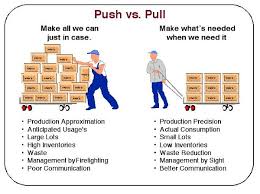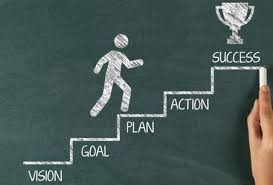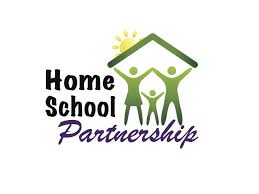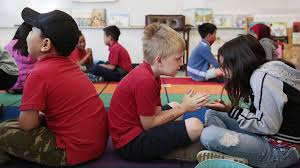
Just-in-time (JIT) techniques
Just-in-time (JIT) techniques
Order Instructions:
Dear Admin,
Consider the following questions:
•What are the benefits of just-in-time (JIT) techniques?
•What types of organisations use JIT techniques?
•Should things change if they are running smoothly?
In an approximately 550-word response, address the following issues/questions:
‘Things that are running smoothly should not be subject to any control. If you commit yourself to just finding and fixing problems, you’ll be able to carry out effective control (within an organisation) with fewer personnel’ (Minoura, 2003).
Discuss what the above statement means and whether you agree with it.
Describe how an organisation that you have experience of, or have researched, has benefitted from just-in-time (JIT) techniques and with special reference to inventory control. Also discuss whether the potential benefits—and drawbacks—of such JIT techniques are limited to large manufacturing businesses or whether they have wider applications for other organisations.
Base your answer on research, your readings and your own experiences.
Please cite all references.
Reference:
Minoura, T. (2003) The Toyota production system. Available from: http://www.toyotageorgetown.com/tps.asp (Accessed: 10th September 2014).
Also,
1) The answer must raise appropriate critical questions.
2)Do include all your references, as per the Harvard Referencing System,
3)Please don’t use Wikipedia web site.
4)I need examples from peer reviewed articles or researches.
5) Turnitin.com copy percentage must be 10% or less.
Appreciate each single moment you spend in writing my paper
Best regards
SAMPLE ANSWER
Things that are running smoothly should not be subject to any control. If you commit yourself to just finding and fixing problems, you’ll be able to carry out effective control (within an organisation) with fewer personnel’. What this statement means is that; in a bid to reduce commitment to unworthy-while fixations, it is crucial that managers in organizations let what is running smoothly just to be. One should not engage in looking for problems to fix where there appears to be none. Instead, such time should be dedicated to solve the real problems that have manifested and need attention at that time. Minoura (2003) asserts that; adoption of just-in-time techniques enables work to be done easily in an organization with requirement of the least number of employees. Such minimization of employees for fixing of problems goes a long in reducing the budget of the organization. The funds saved could be used to expand the organization in myriads of ways. It means that; it is crucial to only dedicate time and energy to problems when they are located and not waste time looking for problems in areas where things seem to be running smooth.
This statement is very much agreeable because; its consideration leads to maximum benefits for organizations. Its application is very crucial as it saves time that could have been used in looking for problems where things are running smoothly. Ha (2013) asserts that; letting things that are running smoothly to run without control and committing to fixing only the detected problems go a long way in ensuring that there is time for priority aspects of the organization and that there is a reduced number of employees.
Adoption of the just in time techniques, benefits organizations in myriads of ways. There are advantages associated with return on investment, quality as well as efficiency. Much of the benefits of utilization of just in time techniques touch on inventory. Weinstein (2014) notes that; an application of just-in-time techniques result to a reduction of holding inventory which is at times referred to as carrying cost. For instance, there is reduction in cost of warehousing such as the cost of utilities. This emanates from having little time and employees dedicated to looking for what might not be running well so as to fix it. Instead, only what is not running well is fixed. Roy, Sana, & Chaudhuri (2012) clarifies that; much of the reduction in salary as an aspect of inventory comes in as a result of having a reduced number of employees. When just-in-time techniques are adopted in an organization, there is attended to.
Benefits and drawbacks associated with just-in-time technology cannot be said to be limited to large manufacturing businesses. The premises of this technique are applicable even to other organizations which are not large or oriented to manufacturing. All levels o organizations, in terms of being small or large, benefit from utilization of just-in-time techniques. For instance, the advantage of a reduced cost of maintenance of inventory, such as salaries is applicable across all levels of organizations. On such note, it is crucial that; organizations of all levels consider articulation of these crucial techniques. Again, the drawbacks of these technologies are applicable to organizations of all levels and categories, whether manufacturing or not. For instance, the drawback of high chances of experiencing breakdown of implements at peak hours is applicable to all organizations.
References
Ha, D 2013, ‘A study of JIT and firm performance in US manufacturing between 1990 and 2009: a re-examination of Swamidass (2007)’, International Journal Of Production Research, 51, 10, pp. 2887-2899, Business Source Complete, EBSCOhost, viewed 9 July 2015.
Minoura, T. (2003) The Toyota production system. Available from: http://www.toyotageorgetown.com/tps.asp
Roy, M. D., Sana, S. S., & Chaudhuri, K. (2012). An integrated producer–buyer relationship in the environment of EMQ and JIT production systems. International Journal Of Production Research, 50(19), 5597-5614. doi:10.1080/00207543.2011.650866
WEINSTEIN, M 2014, ‘Just-in Time Technology Solutions’, Training, 51, 5, pp. 36-39, Business Source Complete, EBSCOhost, viewed 9 July 2015.
We can write this or a similar paper for you! Simply fill the order form!












